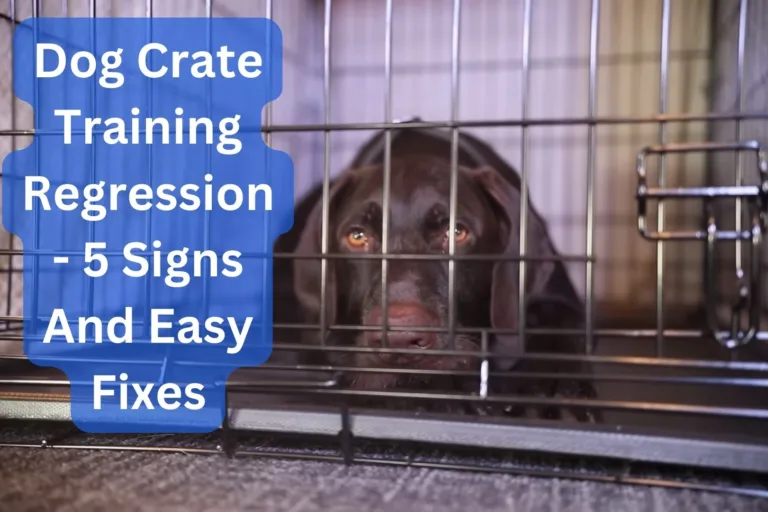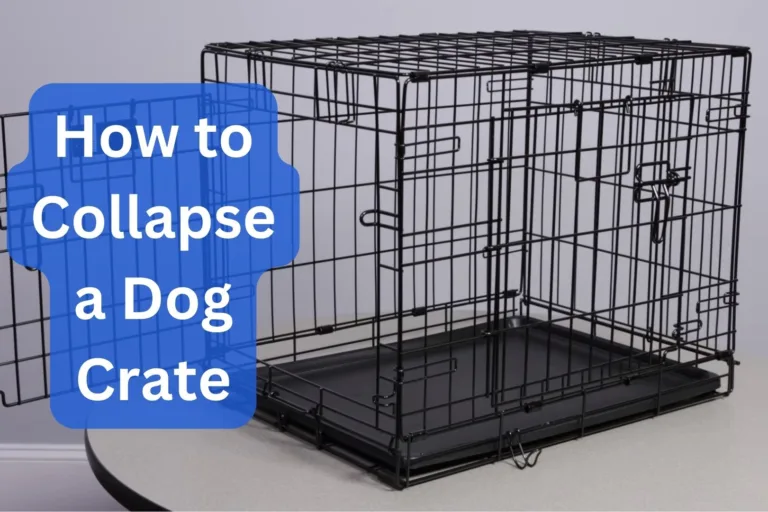How Long Can a Dog Stay in a Crate?
Crating your dog is like putting them in a time-out, except when they actually enjoy it. Isn’t it the perfect way to keep your furry friend safe and out of mischief while you’re not home?
However, it’s crucial to ask yourself, “How long can a dog be in a crate?” before you begin with the venture.
Crating works for both you and your dog if done correctly. Your dog gets to relax and feel cozy while you can come home to a clean house instead of a disaster zone created by your beloved pooch.
Sounds great, doesn’t it? But what happens if you leave your dog for too long?
Dogs are social animals who thrive on companionship and interaction. Prolonged crate time can lead to anxiety as well as depression. It’s really important to learn how long can you crate a dog to save your furball from any possible troubles.
To give you an idea, dogs can be kept in their crates for up to 4-5 hours and shouldn’t be kept in for more than 8 hours.
Let’s dive into the details for a better understanding!
Table of Contents
Guide to Help You Decide How Long Can a Dog Be in a Crate
There is no simple or straight answer to the question of how long can a dog stay in a crate. It’s like trying to guess a dog’s favorite toy – it differs from pup to pup! You should think of crating as an activity tailored according to your dog’s needs.
However, it is still beneficial to look at what others are doing and what dog behaviorists suggest. This will help you make an informed decision.
Puppies

The recommended crate time for puppies is 2-4 hours. This can be broken into further parts.
Puppies that are:
- 8-10 weeks old are recommended to be kept in their crate for 30-60 minutes at a time.
- 3-6 months old can be kept in their crate for 1-3 hours.
- 6-12 months old can tolerate crate times up to as long as 4 hours.
These naughty pups are balls of energy with small bladders. They need frequent bathroom breaks as they can’t hold for too long. As they grow older their bladder capacity improves, and they can tolerate extended periods of crate time.
Initially, people start by crating their puppies for smaller intervals. This allows the puppies to explore the crate without becoming overwhelmed.
It’s ideal if puppies only spend time in their crates which is enough to take a nap and get some rest. This is because puppies need plenty of playtime throughout the day, and they’re usually not great fans of crate time.
Adult Dogs
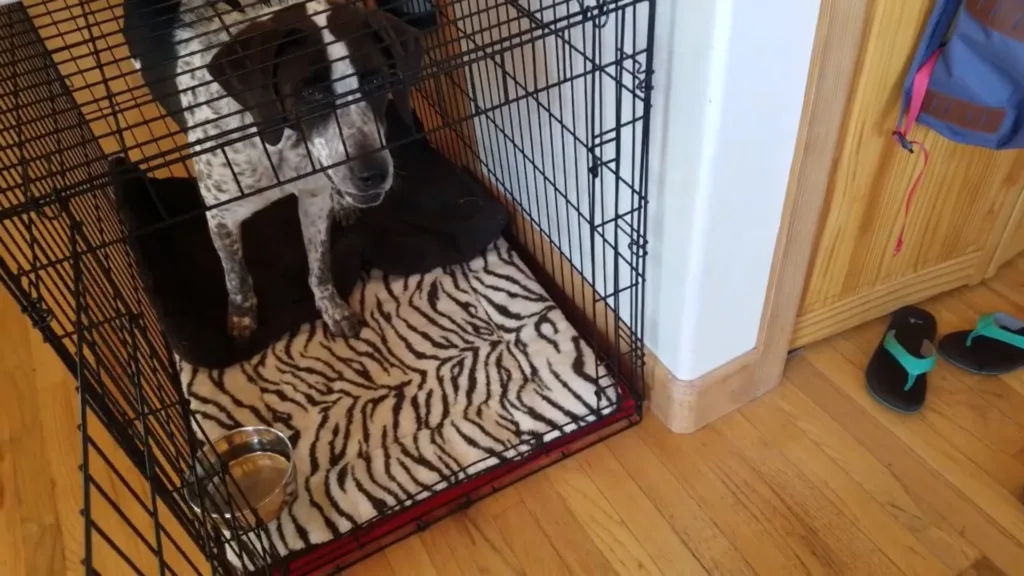
As your dog grows older, you can gradually increase their crate time. People usually crate their adult dogs for up to 6 hours.
It’s important to keep your dog’s crate experience in mind! Remember, patience is the key in crate training your dog.
Senior Dogs

Now, it’s slightly complicated with our senior friends. The length of time that senior dogs spend in their crates varies greatly.
Senior dogs can be kept in their crates for as long as 6 hours. This is when they do not have any health conditions like incontinence, and they can comfortably spend time in the crate.
In some instances, senior dogs prefer to be in their crates to relax or, at times to recover from surgeries or any injury.
In other cases, senior dogs may be suffering from health conditions or anxiety and stress. In this case, people are likely to keep their senior dogs in a crate for no more than 1-2 hours.
So, for senior dogs, it is best to observe their behavior and response, take into consideration their health, and then decide on their crate time.
Factors Affecting How Long Can a Dog Stay in a Crate?
Now that you have an idea of how long should a dog be in a crate, let’s look into the factors that help people determine their dog’s crate time. You should keep in mind these factors as you decide your pooch’s cage time.
As mentioned earlier, crating is an activity unique to each dog. So put in some effort for your beloved and make sound decisions for him. Here are the factors you should take care of:
Your Dog’s Age
We all know that age is just a number, but when it comes to crate training, it’s an important one! Young puppies cannot be kept in a crate for longer periods. Their bladders are as tiny as they are, so don’t expect them to stay put for hours on end. They need to be taken out every 2-3 hours if you don’t want a mess.
And let’s be real, they have the energy of a toddler on a sugar high. They cannot help moving around, jumping, and playing. So, staying confined for long periods may not be tolerable for them.
As for the adults of the dog world, they usually love relaxing in their cozy homes and may be able to stay in their crates for a longer time. However, older dogs are more likely to experience health conditions, so ensure they’re comfortable.
What Type of Breed is Your Dog?
The activity level of dogs varies in different breeds. Some breeds are more active and energetic, while others love lounging around.
For example, a high-energy breed like a Border Collie or a Labrador Retriever may not do well staying in a crate for long periods as they have an innate need to be active.
On the other hand, low-energy breeds like Bulldogs or Pugs may tolerate being crated for longer periods.
Past Training
Is your dog familiar with crates, or is he new to the concept? While deciding how long can a dog stay in a crate, it’s really important to pay attention to your dog’s crating experience.
Dogs who have been previously acquainted with crates are generally more comfortable spending longer periods in them. In comparison, dogs who aren’t in the habit of having a crate-time might find it annoying at the start.
If your dog is new to the concept, start with smaller intervals. Allow your dog to get accustomed to the crate and gradually increase the time they spend in it.
Health and Well-being
The health of your dog should be your top priority. If you sense symptoms of anxiety or stress, that’s your sign to reduce your dog’s crate time. You don’t want a scarred relationship with your furry friend.
Moreover, if your dog has any health condition such as arthritis or incontinence, they may not be able to stay in a crate for long periods. Injuries also require special attention. In such cases, it’s better to consult a behaviorist or your dog’s veterinarian before fixing a crate time.
Temperament
Dogs have unique personalities, just like people. Some dogs are naturally relaxed and easygoing, while others are more anxious and easily stressed. This affects their tolerance for the crate.
For example, an anxious dog might not be able to stay inside the crate for longer periods as compared to a naturally calm dog.
So, while deciding how long can a dog be in a crate, it’s important to consider your dog’s personality. If you have an anxious dog, you may want to avoid crating them for long periods.
Tips to Help You Crate Train Your Dog
Now that we have covered how long to crate a dog, here are a few tips to make the process easier for you!
Make It a Positive Experience for Your Dog

If your dog enjoys being in the crate, he will not mind spending time there. To ensure this, make sure your dog views the crate as a place to unwind.
Do not use the crate as a punishment. Once your dog associates a negative feeling with the crate, it will be difficult to remove.
To encourage your dog, you could give him a treat every time he goes inside the crate. You could also place his favorite toys inside and make the crate more comfortable and appealing.
Pick the Correct Crate Size
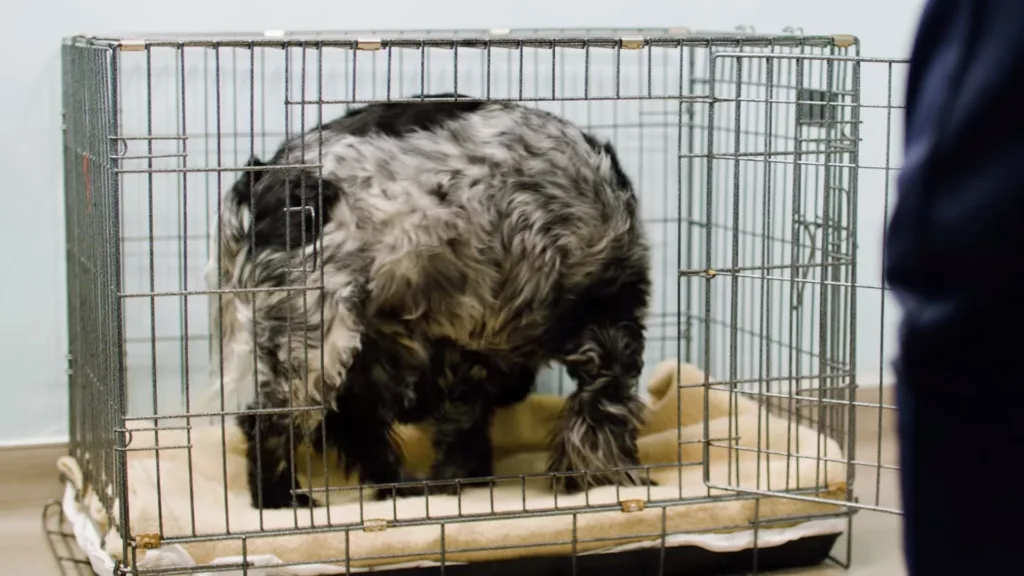
Take some time to pick the right-size crate for your beloved pooch. The crate should be large enough for your dog to stand up, turn around, and lie down comfortably.
If the crate is too small, your dog will feel cramped and uncomfortable. He may even feel claustrophobic.
On the other hand, having a crate that is too large for your dog is also not ideal. The crate might not feel cozy and secure if it’s too large.
Feed Your Dog Inside the Crate
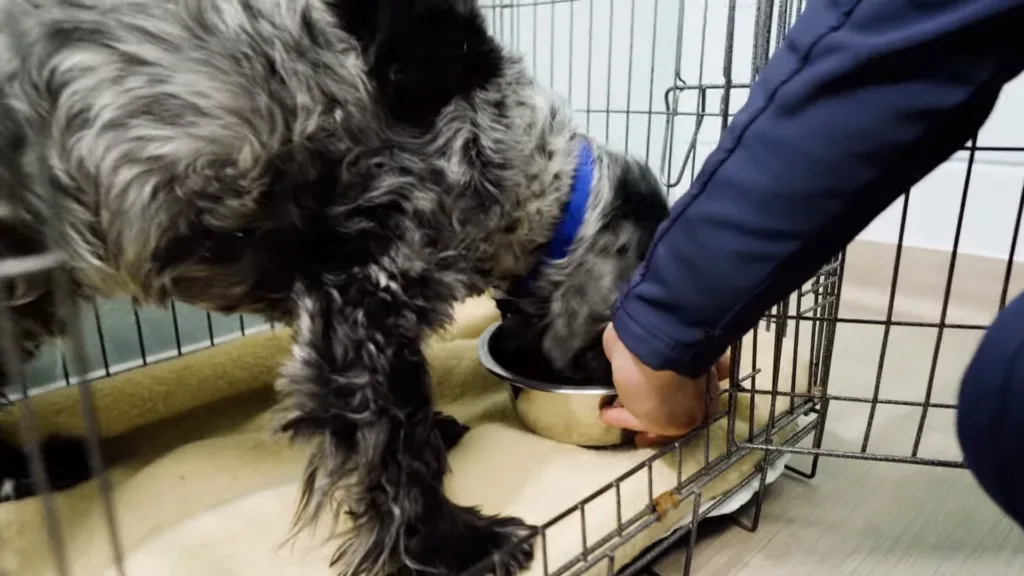
This helps create a positive association between your dog and the crate. It will also help your dog to view the crate as a place for relaxation and comfort rather than confinement.
You could start by placing the bowl near the crate. Gradually move the bowl nearer to the crate each day and finally place it inside the crate.
Some dogs aren’t scared to go inside their crates. In such a case, you could start by keeping the bowl directly inside the crate.
Frequently Asked Questions
Here are some frequently asked questions, which might be what you are thinking as well.
How long should a dog sleep in a crate at night?
Ideally, dogs can sleep for 8-10 hours in a crate at night. However, younger dogs need frequent bathroom breaks, so this time can be reduced.
How long can a dog be in a crate without water?
It is generally recommended that you should not leave your dog without water for more than 4-6 hours. However, you should also take your dog’s health and temperature into account, as proper hydration is important. If you are confused about this, talking to your vet is also a good option.
Should I crate my dog when I leave the house?
If your dog is comfortable and you’re planning to leave for a short time, then yes. If you’re leaving for a longer time, your dog should have access to food, water, and a comfortable space outside the crate.
Wrapping It Up
Till now, you must have gathered an idea of how long can you leave a dog in a crate. Come on, buddy, it ain’t that complicated!
The ideal crate time for your dog depends on a few factors, like your dog’s age, breed, temperament, health condition, and past training. Whenever you find yourself wondering how long can a dog stay in a crate, keep these factors in mind.
With proper training and attention, a crate can be a safe and comfortable space for your furry friend. Remember to always prioritize your dog’s well-being and provide them with plenty of mental and physical stimulation outside the crate.
We hope this guide helps! Read our other articles for more information on a number of dog-crate-related queries.
Happy crating!



